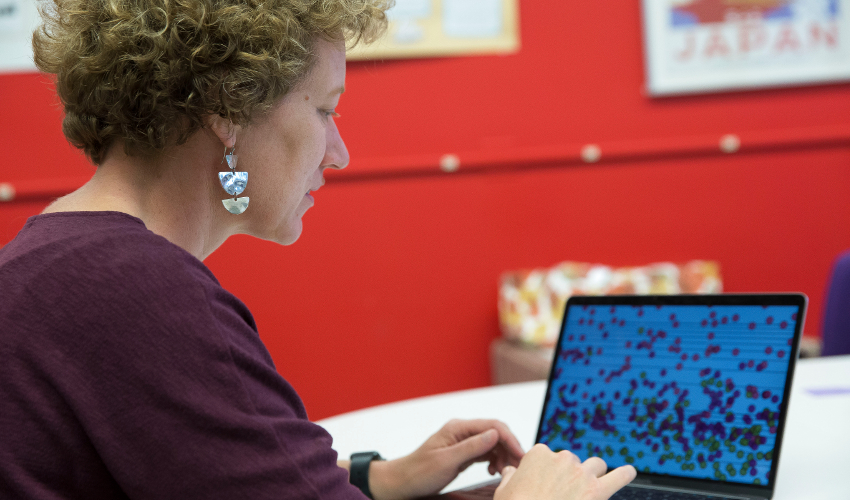New technique provides an inside look at virus evolution

Assistant Professor of Biology Pleuni Pennings
SF State-led study could aid vaccine design
For some, the word “mutation” might conjure up images of twisted monsters from 1950s science fiction movies. But in the real world, mutations underlie all evolution — and for the viruses that infect us, they're key to evading our drugs and bodily defenses. Now a study led by San Francisco State University Assistant Professor of Biology Pleuni Pennings identifies a pioneering method for tracking the success of virus mutations within the human body. The technique could lead to insights into many different viruses, including the ones used in some vaccines.
“It’s cool because this is a technique we can now use for other viruses and other situations,” said Pennings.
Knowing how viruses mutate is crucial to understanding what makes them so dangerous. In the course of reproduction, the HIV virus makes lots of “mistakes,” making slightly imperfect copies of itself. Usually these mutations are harmful or don’t matter at all. But every once in a while they make the virus better at dealing with new challenges, such as anti-viral drugs. When scientists have tracked these mutations in viruses within the human body, however, they’ve only looked at a small amount at a time.
Pennings noticed this omission and, together with collaborators at Tel Aviv University, Stanford University and the Rega Institute for Medical Research, decided to dig into a dataset that was published in 2000. The researchers from that study took blood samples from 160 patients on anti-HIV drugs and recorded sections of HIV genetic material in each sample. Looking at how common different mutations were in these sections, Pennings and her collaborators were able to determine which mutations were most harmful for the virus.
Some unexpected results emerged. For instance, viruses featuring a certain piece of genetic code, called a CpG site, fared very poorly. That discovery fits with emerging evidence suggesting that these CpG sites might be targeted by the human immune system, explains Pennings. “We think it can be used as a recognition tool,” she said. “Whatever has a CpG site is just going to get kicked out of the cell.”
It was also notable that the analysis worked at all. By comparing the results against patterns biologists have known about for a long time, Pennings and her collaborators were able to confirm that the results they were seeing were real. They published their findings on June 28 in PLoS Genetics.
“We show that we can estimate the costs of mutations for the virus as they occur in the patient — in the environment where it matters — as opposed to in the lab,” Pennings said.
The results likely won’t be too useful in treating HIV, which can now be controlled by very effective drug cocktails. It may, however, have applications for those who create vaccines for other viruses. Vaccines sometimes consist of a weakened version of a virus, meant to jump-start our immune system without causing harm. But occasionally, such as in the case of a well-publicized polio outbreak in Haiti in 2000, the weakened virus evolves in peoples’ bodies to once again cause illness. With these new tools for watching how viruses mutate, scientists might be able to better understand and predict events when vaccines backfire.
Just as importantly, the method will help scientists understand more generally the parts of a virus that are most crucial to its success. In fact, the team is already using the technique to look at Hepatitis C.